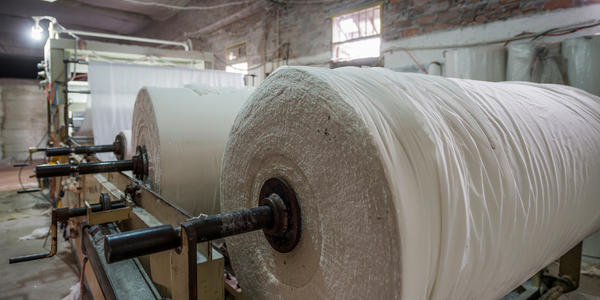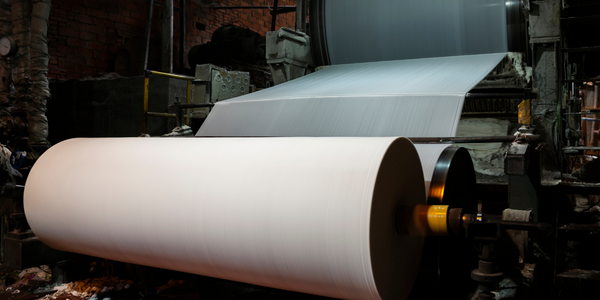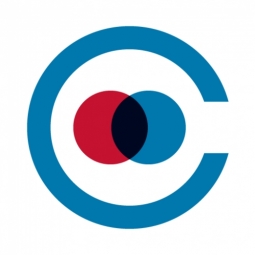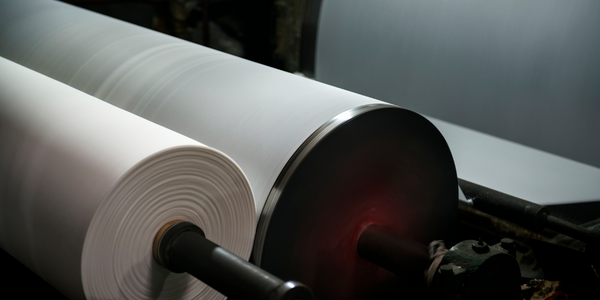Technology Category
- Platform as a Service (PaaS) - Application Development Platforms
Applicable Industries
- Finance & Insurance
- Paper & Pulp
Use Cases
- Inventory Management
- Time Sensitive Networking
Services
- Training
About The Customer
African Export-Import Bank (Afreximbank) is a supranational financial institution based in Egypt. The bank provides services aimed at the development, diversification, and expansion of African trade. Afreximbank conducts meetings with board members and investors, both within Africa and abroad. The bank was facing challenges in managing large quantities of confidential documents for these meetings, especially when travel was involved. The bank sought a solution that could streamline their document management process, reduce printing costs, and ensure the security of their confidential documents.
The Challenge
African Export-Import Bank (Afreximbank), a supranational financial institution based in Egypt, was facing challenges in managing documents for its board meetings and investor interactions. The bank was grappling with the cumbersome process of printing large quantities of confidential documents, accommodating last-minute changes, and ensuring the secure disposal of these documents post-meetings. The process was not only time-consuming and costly but also posed significant security risks, especially when the board members had to travel with these documents for meetings abroad. The bank was in dire need of a secure and efficient solution that could streamline their document management and meeting preparations.
The Solution
Afreximbank found its solution in Convene, a software that offers a secure and paperless meeting solution. The bank's board secretarial team, IT department, and risk management attended a demo of Convene and were satisfied with its functionalities. The software was evaluated and received positive feedback from the IT team. Convene was used for board and departmental meetings, simplifying the process of organizing meetings and preparing board packs. The software allowed the bank to export and circulate meeting packs with a single click, saving time, effort, and cost. Additionally, Convene's Document Library provided a secure space for all the bank's documents, reports, and meeting packs, eliminating the need for mass reprinting and ensuring data security.
Operational Impact
Quantitative Benefit

Case Study missing?
Start adding your own!
Register with your work email and create a new case study profile for your business.
Related Case Studies.

Case Study
Wireless Improves Efficiency in Compressed Air Systems
Hollingsworth and Vose wanted to improve the efficiency of their compressed air system, lower the electricity expense component of manufacturing cost in their commodity industry, and conserve energy leading to lowered greenhouse gas emissions. Compressed air systems degrade over time and become leaky and inefficient. Hollingsworth and Vose wanted to increase the frequency of system inspections without paying the high cost of manual labor.

Case Study
Real-time In-vehicle Monitoring
The telematic solution provides this vital premium-adjusting information. The solution also helps detect and deter vehicle or trailer theft – as soon as a theft occurs, monitoring personnel can alert the appropriate authorities, providing an exact location.“With more and more insurance companies and major fleet operators interested in monitoring driver behaviour on the grounds of road safety, efficient logistics and costs, the market for this type of device and associated e-business services is growing rapidly within Italy and the rest of Europe,” says Franco.“The insurance companies are especially interested in the pay-per-use and pay-as-you-drive applications while other organisations employ the technology for road user charging.”“One million vehicles in Italy currently carry such devices and forecasts indicate that the European market will increase tenfold by 2014.However, for our technology to work effectively, we needed a highly reliable wireless data network to carry the information between the vehicles and monitoring stations.”

Case Study
Process Predictive Analysis in Pulp and Paper Mill
Common paper breaks consequently lead up to 60 minutes of downtime, delaying a potential $10K per hour of production value process. Thus, defective products cause financial and damage company's reputation. Improving quality and reducing defect rates can generate millions of dollars of revenue per year for your company.

Case Study
Safety First with Folksam
The competitiveness of the car insurance market is driving UBI growth as a means for insurance companies to differentiate their customer propositions as well as improving operational efficiency. An insurance model - usage-based insurance ("UBI") - offers possibilities for insurers to do more efficient market segmentation and accurate risk assessment and pricing. Insurers require an IoT solution for the purpose of data collection and performance analysis

Case Study
Smooth Transition to Energy Savings
The building was equipped with four end-of-life Trane water cooled chillers, located in the basement. Johnson Controls installed four York water cooled centrifugal chillers with unit mounted variable speed drives and a total installed cooling capacity of 6,8 MW. Each chiller has a capacity of 1,6 MW (variable to 1.9MW depending upon condenser water temperatures). Johnson Controls needed to design the equipment in such way that it would fit the dimensional constraints of the existing plant area and plant access route but also the specific performance requirements of the client. Morgan Stanley required the chiller plant to match the building load profile, turn down to match the low load requirement when needed and provide an improvement in the Energy Efficiency Ratio across the entire operating range. Other requirements were a reduction in the chiller noise level to improve the working environment in the plant room and a wide operating envelope coupled with intelligent controls to allow possible variation in both flow rate and temperature. The latter was needed to leverage increased capacity from a reduced number of machines during the different installation phases and allow future enhancement to a variable primary flow system.








